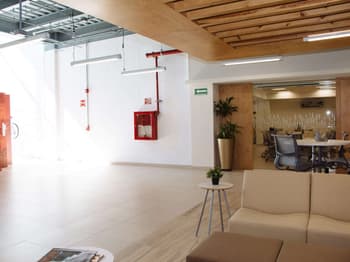Starting a lease and setting up your business is an exciting milestone. One of the first decisions you will face is how to handle fit-out works to customise your space to suit your business needs. This article covers the key stages and essential factors to consider when planning and completing your fit-out. It also highlights any additional documents or agreements you should know during the process.
Before Carrying Out Your Fit-out
Before planning your fit-out works, the landlord may provide additional documents, including a fit-out deed and a fit-out guide.
1. Fit-out Deed
A fit-out deed, also known as a fit-out access deed or fit-out licence, is a legal document. This licence grants you access to the premises for a specific ‘fit-out period.’ This period typically occurs before your lease begins, allowing you to enter the premises to complete your fit-out work. Access is usually provided only if you have negotiated early entry before your lease start date.
For example, before access is provided, a landlord will usually require the tenant to provide signed copies of the:
- lease (and any other documents);
- security deposit or bank guarantee; and
- required insurances under the lease.
Landlords may need to obtain specific insurances that apply only during the fit-out period. Sometimes, an early licence may also be incorporated directly into the lease, and a separate document may not be provided.
Additionally, if substantial works or a more extended fit-out period are involved, this could be included in the agreement for lease.
2. Fit-out Guides
If your premises are in a shopping centre or commercial building, the landlord might give you a fit-out guide, which could also be included in the disclosure statement. Although this guide is not a legal document, leases often require tenants to follow it when completing their fit-out work. The guide may outline what types of installations are allowed and specify which styles are permitted or prohibited. If a fit-out guide applies to your premises, review it before creating any plans.
3. Requirements for Consent
Before beginning your fit-out works, you need the landlord’s approval for your plans. Your lease typically requires you to submit drawings and specifications for the fit-out, often before the handover. A professional contractor is usually needed to prepare these documents.
Leases often require obtaining any necessary council or authority approvals for your fit-out work. This means that if your work needs approval from the local council, you may require documents such as:
- development approval (otherwise referred to as DA); or
- complying development certificate (also known as CDC).
During Your Fit-out
Once your fit-out has begun, your contractor must understand what is required. Leases often require the tenant to be the ‘principal contractor’ concerning any work and alterations on the premises. This means that you are legally in control over the construction on the premises. Further, you are in charge of managing and complying with any work health and safety requirements.
If possible, you should consider seeking a right to pass on the principal contractor obligation to your contractor. However, if this is not possible, you should ensure that your contractor understands the following:
- plans and specifications of your fit-out;
- requirements under fit-out guides or fit-out deeds; and
- importance of complying with any work health & safety regulations.
End of Your Fit-out
After finishing your fit-out works, you may need to give the landlord a completion certificate to show that the work is done and the space is ready for business. At this point, it is crucial to remember the timeframes specified in your lease.
For example, your lease may set the commencement date to be the earlier of:
- the completion of your fit-out period; or
- when the tenant begins trading.
Suppose you complete your fit-out before the end of the fit-out period and are ready to start trading. In this case, your lease will begin, including your obligations like paying rent and outgoings.

This guide will help you to understand your options when you purchase a business with leased premises.
Other Considerations
Any Landlord Works
At times, the landlord may carry out work on the premises while you’re doing your fit-out. If you know this might happen, you should ask questions to ensure the landlord’s work won’t conflict with or interfere with yours. If you are moving into a building that has not been fully constructed, you might receive an agreement for lease. This agreement will specify deadlines for the landlord’s work to be finished and for your work to start. Before signing any agreement, carefully review these timelines to ensure you can complete your fit-out as planned and without interference from the landlord.
Other Works
After completing your fit-out work, you must request the landlord’s consent to make any additional changes to the premises during your lease term. Most leases require landlord approval before any alterations can be made. Depending on the scope of your changes, you may also need to submit new plans.
Additionally, the lease may state that you are responsible for covering the landlord’s costs for approving these alterations, so consider these expenses before starting any new work.
Costs
You are usually responsible for the cost of fitting out your premises unless the landlord has agreed to contribute financially. Keep in mind that this isn’t the only expense you’ll face. Besides the construction work, you may also need to cover the cost of:
- hoarding (temporary construction structure);
- your landlord’s consent for your fit-out (including any architect’s or professional fees incurred in reviewing your fit-out plans); and
- obtaining council approval (if required).
Clawbacks
It is important to be aware of any ‘clawback’ clauses in your lease agreement or fit-out deed, especially if the landlord has provided a monetary contribution toward your fit-out works.
Understand these clauses thoroughly before beginning your fit-out projects. If you breach the lease agreement or fit-out deed, you may be required to repay the landlord for the contribution you received.
These clauses exist because an early termination of the lease prevents the landlord from receiving the full benefit of your fit-out over the agreed term. The repayment often decreases over time, so the longer you remain on the premises, the less you have to pay back in case of a breach.
Key Takeaways
Completing your fit-out works and bringing your business to life is exciting. However, it is crucial to remember the requirements and lease obligations you must follow throughout the process. Your landlord will provide a fit-out deed and a guide to help you complete the work. Before starting any work, you need to obtain your landlord’s consent.
If you have any questions about fitting out your premises, our experienced leasing lawyers can assist. As part of our LegalVision membership, you will have unlimited access to lawyers to answer your questions and draft and review your documents for a low monthly fee. Call us today at 1300 544 755 or visit our membership page.
Frequently Asked Questions
A fit-out deed, also known as a fit-out access deed or fit-out licence, is a legal document that grants you access to your premises for a specific period before your lease begins. This allows you to complete your fit-out work. It’s important because it sets the terms for early access and any preconditions that must be met before you can start your fit-out.
Before beginning your fit-out works, the landlord may provide documents like a fit-out deed and a fit-out guide. You’ll need to obtain the landlord’s consent for your fit-out plans, ensure compliance with any guidelines, and possibly secure necessary council approvals.
We appreciate your feedback – your submission has been successfully received.











